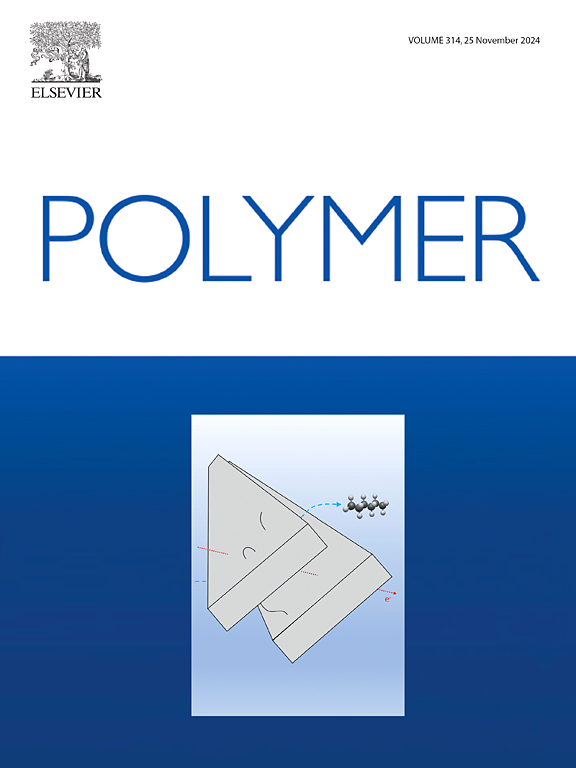Microwave-assisted synthesis of Poly(glycerol sebacate): Temperature-Controlled approaches for enhanced properties
IF 4.5
2区 化学
Q2 POLYMER SCIENCE
引用次数: 0
Abstract
Poly(glycerol sebacate) (PGS) is a biocompatible, bioresorbable, and biodegradable elastomer obtained through a two-step process: pre-polymer synthesis and crosslinking. However, its conventional synthesis requires prolonged heating under an inert atmosphere, making it time-consuming and energy-intensive. Although synthesizing PGS pre-polymers in a domestic microwave oven offers a low-cost alternative that simplifies the production of this biomaterial, previous studies have reported that the resulting polymers exhibit poor properties. This study investigates the influence of the temperature reached by the mixture during microwave-assisted synthesis on obtaining a pre-polymer with enhanced properties. Two synthesis approaches were investigated: one that limits the maximum reaction temperature to 120 °C (S1) and another that allows temperatures up to 170 °C (S2). The thermal, physical, and chemical properties of pre-polymers and elastomers were compared using differential scanning calorimetry (DSC), Fourier transform infrared spectroscopy (FTIR), titration, and swelling tests. The results showed that limiting the reaction temperature to 120 °C significantly reduced glycerol volatilization, resulting in a pre-polymer with a higher degree of esterification. Although the swelling percentage indicated a lower crosslinking density in S1-derived elastomer, no excessive glycerol loss was observed. Based on these results, a PGS pre-polymer with preserved chemical characteristics can be synthesized using a domestic microwave, yielding elastomers with notable properties, offering a more efficient and cost-effective alternative to conventional methods.


微波辅助合成聚癸二酸甘油:提高性能的温控方法
聚甘油癸二酸酯(PGS)是一种生物相容性,生物可吸收,可生物降解的弹性体,通过两步工艺制备:预聚合成和交联。然而,它的传统合成需要在惰性气氛下长时间加热,这使得它既耗时又耗能。虽然在家用微波炉中合成PGS预聚合物提供了一种低成本的替代方案,简化了这种生物材料的生产,但先前的研究报告称,所得聚合物表现出较差的性能。本研究考察了微波辅助合成过程中混合物所达到的温度对制备性能增强的预聚物的影响。研究了两种合成方法:一种将最高反应温度限制在120°C (S1),另一种允许温度高达170°C (S2)。通过差示扫描量热法(DSC)、傅里叶变换红外光谱法(FTIR)、滴定法和膨胀试验,比较了预聚体和弹性体的热、物理和化学性质。结果表明,将反应温度限制在120℃可显著减少甘油挥发,得到酯化程度较高的预聚物。虽然膨胀率表明s1衍生弹性体的交联密度较低,但没有观察到过多的甘油损失。基于这些结果,可以使用家用微波合成具有保留化学特性的PGS预聚体,产生具有显着性能的弹性体,为传统方法提供了更高效和更具成本效益的替代方法。
本文章由计算机程序翻译,如有差异,请以英文原文为准。
求助全文
约1分钟内获得全文
求助全文
来源期刊

Polymer
化学-高分子科学
CiteScore
7.90
自引率
8.70%
发文量
959
审稿时长
32 days
期刊介绍:
Polymer is an interdisciplinary journal dedicated to publishing innovative and significant advances in Polymer Physics, Chemistry and Technology. We welcome submissions on polymer hybrids, nanocomposites, characterisation and self-assembly. Polymer also publishes work on the technological application of polymers in energy and optoelectronics.
The main scope is covered but not limited to the following core areas:
Polymer Materials
Nanocomposites and hybrid nanomaterials
Polymer blends, films, fibres, networks and porous materials
Physical Characterization
Characterisation, modelling and simulation* of molecular and materials properties in bulk, solution, and thin films
Polymer Engineering
Advanced multiscale processing methods
Polymer Synthesis, Modification and Self-assembly
Including designer polymer architectures, mechanisms and kinetics, and supramolecular polymerization
Technological Applications
Polymers for energy generation and storage
Polymer membranes for separation technology
Polymers for opto- and microelectronics.
 求助内容:
求助内容: 应助结果提醒方式:
应助结果提醒方式:


